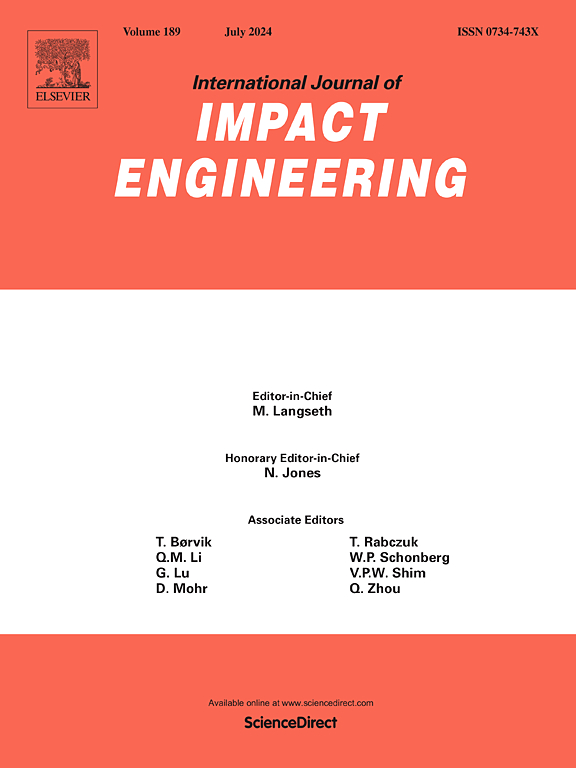深度学习加速动态加载功能梯度材料的设计
IF 5.1
2区 工程技术
Q1 ENGINEERING, MECHANICAL
International Journal of Impact Engineering
Pub Date : 2025-06-13
DOI:10.1016/j.ijimpeng.2025.105443
引用次数: 0
摘要
裂裂是一种由动加载引起的断裂现象,受峰值应力(σp)、应变率(ε˙)和加载应力历史脉冲持续时间(τ)的显著影响。由于加载技术的限制,裂裂的实验研究经常遇到这些参数之间的耦合,导致结果不一致。本文介绍了一种利用梯度密度冲击器(GDI)独立调节这些参数的新方法。建立了基于深度学习的GDI结构反设计模型。结果表明,GDI的独特结构产生了分段的稀疏波,可以精确控制其强度和到达碎片平面的时间。这使得散裂过程中σp、ε˙和τ的调整变得有效。采用混合损失函数对反设计模型进行训练,获得了较好的预测精度,R²值超过0.99。利用训练好的模型,设计了定制的GDI结构,以获得特定的期望σp、ε˙和τ。设计的GDI能引起散裂,σp、ε˙τ与期望值接近。这种基于机器学习的方法为碎片实验的精确设计提供了强大的工具,推进了动态加载下材料行为的研究。本文章由计算机程序翻译,如有差异,请以英文原文为准。
Deep learning accelerating design of functionally graded materials for application in dynamic loading
Spallation is a fracture phenomenon induced by dynamic loading and significantly influenced by peak stress (), strain rate (), and pulse duration () of loading stress history. Experimental studies of spallation often encounter coupling among these parameters due to limitations in loading techniques, leading to inconsistent findings. The study introduces a novel method to independently regulate these parameters using a graded density impactor (GDI). A deep learning-based inverse design model was developed to optimize the GDI structure. Results show that the unique architecture of the GDI generates segmented rarefaction waves, enabling precise control of their intensity and arrival time at the spall plane. This allows effective adjustment of , and during spallation. The inverse design model was trained with a mixed loss function and achieved outstanding predictive accuracy with an R² value exceeding 0.99. Using the trained model, tailored GDI structures were designed to achieve specific expected , and . The designed GDI can cause spallation with , and closely matching expected values. This machine learning-based approach offers a powerful tool for the precise design of spall experiments, advancing the study of material behavior under dynamic loading.
求助全文
通过发布文献求助,成功后即可免费获取论文全文。
去求助
来源期刊

International Journal of Impact Engineering
工程技术-工程:机械
CiteScore
8.70
自引率
13.70%
发文量
241
审稿时长
52 days
期刊介绍:
The International Journal of Impact Engineering, established in 1983 publishes original research findings related to the response of structures, components and materials subjected to impact, blast and high-rate loading. Areas relevant to the journal encompass the following general topics and those associated with them:
-Behaviour and failure of structures and materials under impact and blast loading
-Systems for protection and absorption of impact and blast loading
-Terminal ballistics
-Dynamic behaviour and failure of materials including plasticity and fracture
-Stress waves
-Structural crashworthiness
-High-rate mechanical and forming processes
-Impact, blast and high-rate loading/measurement techniques and their applications
 求助内容:
求助内容: 应助结果提醒方式:
应助结果提醒方式:


